Tuberose Pflanzenpflege - Blumen, Duft, Farben, Bewässerung, Dünger
Die Tuberose ist eine einzigartige Blume - nicht nur wegen ihres attraktiven Aussehens, sondern auch wegen des weltfremden Dufts, den sie verströmt. Leider ist sie nicht einfach zu züchten, deshalb braucht sie besondere Pflege. Mit ein wenig Hingabe kann man aber sehr gute Ergebnisse erzielen. Sehen Sie nach, wo man Tuberosen pflanzen kann, und erfahren Sie mehr über ihre Eigenschaften. Lernen Sie die verschiedenen Sorten der Pflanze kennen und finden Sie heraus, ob sie etwas für Sie ist.

Woher kommt die Tuberose?
Die Tuberose (Tuberosa) ist eine Pflanze, die direkt mit Mexiko verbunden ist. Dort wurde diese Blume ursprünglich von den Azteken angebaut. Im 16. Jahrhundert wurde sie aus Südamerika nach Europa gebracht, und die ersten Erwähnungen der Pflanze stammen aus Spanien. Viele Jahre später wurde sie auch in anderen Ländern beliebt. Heute gilt sie als Edelpflanze, vor allem wegen ihrer hohen Ansprüche an den Anbau.
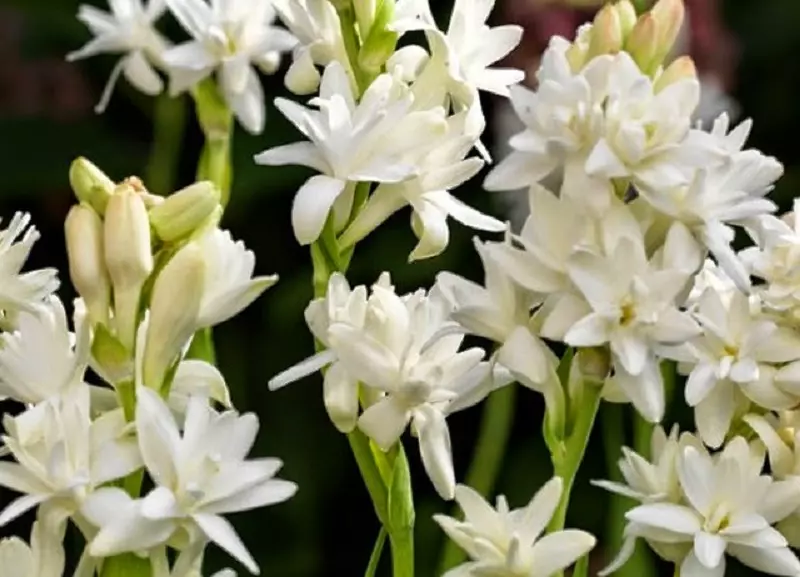
Wie sieht die Tuberose aus?
Das Aussehen der Tuberose ist sehr charakteristisch, so dass man sie kaum mit einer anderen Pflanze verwechseln kann. Die Basis besteht aus langen Blättern, die als lanzenförmig bezeichnet werden. Zwischen ihnen wächst ein langer Stiel, aus dem sich Blüten entwickeln. Sie sehen aus wie kleine Lilien, wobei vieles von der jeweiligen Sorte abhängt. Manche haben dichtere Blütenbüschel.
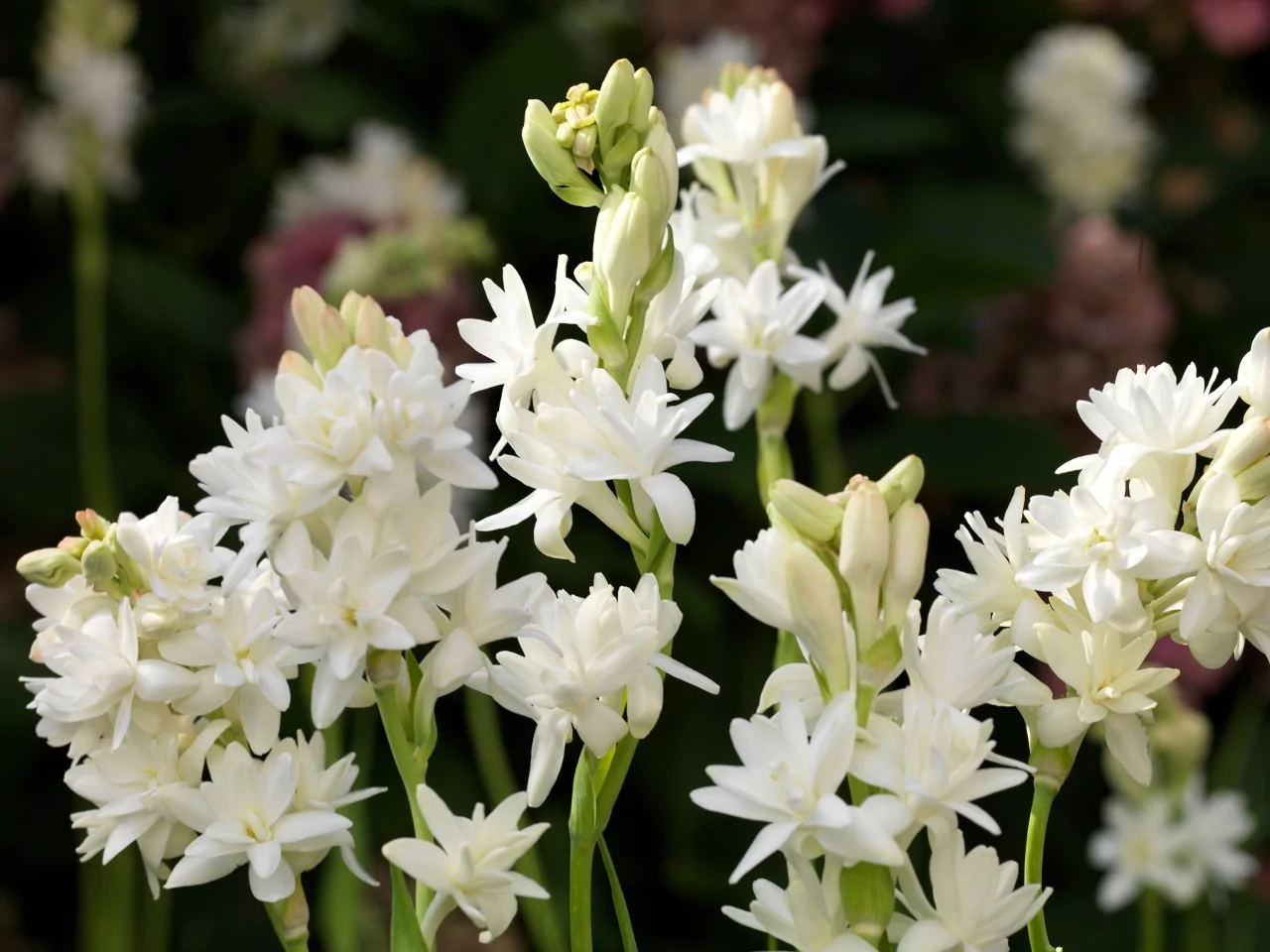
Tuberose - bemerkenswerte Sorten
Es gibt weltweit viele Sorten der Tuberose. Sie unterscheiden sich durch ihre Blütenfarbe und -dichte. Einige sind besonders beliebt. Zu den begehrtesten Sorten gehören:
- Gewöhnliche Tuberose - Polianthes
- Gelbe Tuberose - Polianthes Yellow Baby
- Hellrosa Tuberose - Polianthes Sensation
- Goldgelbe Tuberose - Polianthes Super Gold
- Rosa Tuberose - Polianthes Pink Saphier
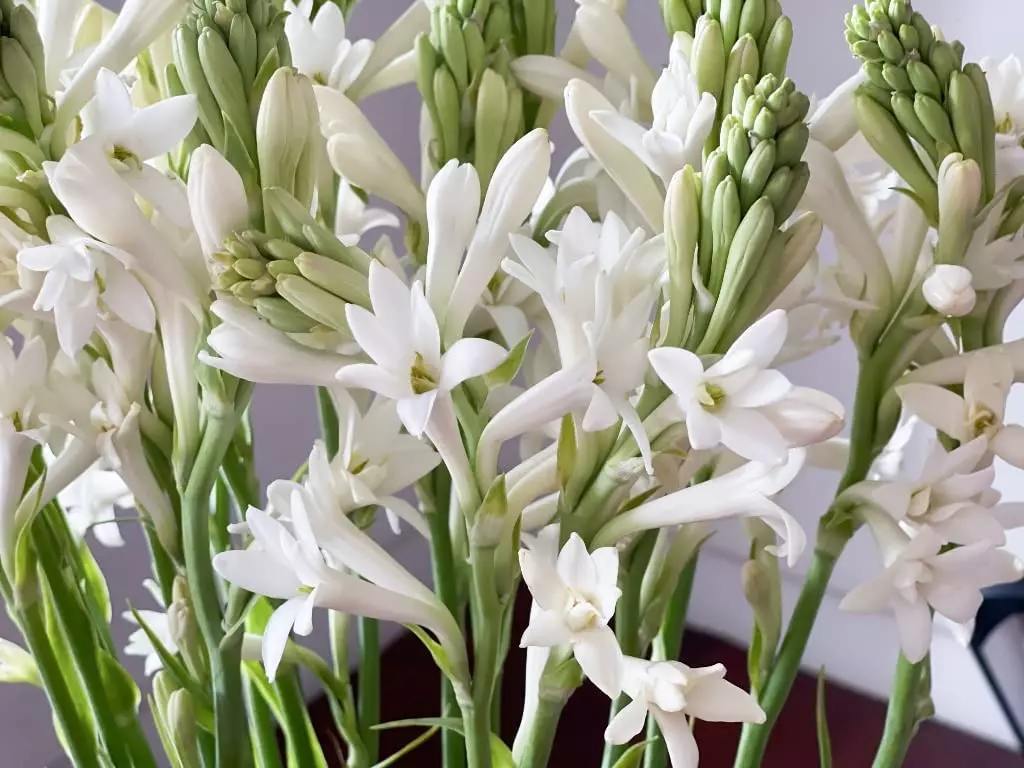
Was ist der beste Boden für Tuberose?
Der Boden für die Tuberose sollte sehr fruchtbar sein. Ein humusreiches Medium ist die beste Wahl. Der Boden muss auch einige andere Bedingungen erfüllen. Er muss durchlässig sein und darf nicht sauer sein. Aus diesem Grund fügen erfahrene Gärtner ihren Erdmischungen etwas Rinde, Kompost und Kalkdünger hinzu.
Tuberose - wie gießt und düngt man die Pflanze?
Die Tuberose hat einen sehr spezifischen Bedarf an Bewässerung und Düngung. Was das erste Element betrifft, so wird es nur während längerer Perioden ohne Niederschlag benötigt. Dann muss der Boden von Hand gegossen werden, wobei man darauf achten sollte, dies nur morgens zu tun.
Die Tuberose sollte erst gedüngt werden, wenn die ersten Blütenknospen am Stängel erscheinen. Sie müssen mit Substanzen gestärkt werden, die für blühende Pflanzen bestimmt sind. Die regelmäßige Düngung der Tuberose sollte fortgesetzt werden, bis die Pflanze ihre Blütezeit beendet hat.

Tuberose - Überwinterung der Pflanze
Die Tuberose verträgt keine niedrigen Temperaturen. Deshalb kann sie nicht im Boden überwintert werden. Die Zwiebeln müssen ausgegraben, gereinigt und richtig gelagert werden. Zu diesem Zweck können Sie einen mit Holzspänen gefüllten Behälter verwenden. Graben Sie die Zwiebeln darin ein. Der Raum, in dem die Tuberose gelagert werden soll, sollte die richtige Temperatur haben, d.h. nicht niedriger als 7-8°C und nicht höher als 13°C.
Tuberosezwiebeln müssen im Winter vor Feuchtigkeit geschützt werden. Zu viel Wasser kann zu Fäulnis führen, und wenn das passiert, sollte die Pflanze weggeworfen werden.
Tuberose - ein Duft für viele Zwecke
Die Blüten der Tuberose sind einzigartig, weil sie einen intensiven Geruch verströmen, der in ihrer Umgebung verbleibt. Aus diesem Grund werden sie zur Herstellung von speziellen ätherischen Ölen verwendet. Sie ist ein Bestandteil von Parfüms - beliebt bei reifen und selbstbewussten Frauen. Außerdem kann man diesen Duft auch als ätherische Öle kaufen, die in der Aromatherapie verwendet werden. Sie haben die folgenden Eigenschaften:
- stress mitigation,
- relaxation,
- relax for tired muscles.
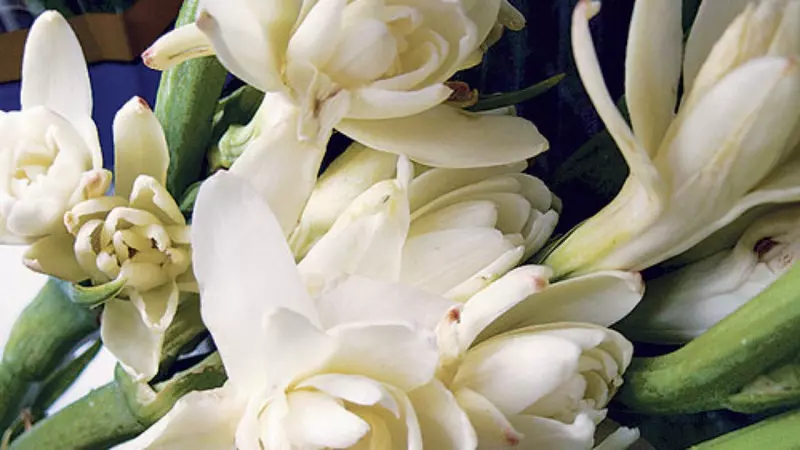
Tuberose - Krankheiten und Schädlinge
Die Tuberose ist nicht besonders anfällig für Schädlinge und Krankheiten. Es gibt jedoch einige Gefahren, die sie bedrohen können. Die häufigsten Krankheiten sind Pilzinfektionen, die die Blätter und die Knolle befallen, vor allem, wenn der Boden übermäßig bewässert wurde.
Was Schädlinge betrifft, so sind Blattläuse die am häufigsten vorkommenden. Sie sind jedoch leicht zu beseitigen. Die Nacktschnecken sind viel schwierigere Feinde, da sie gerne die Blätter der Tuberose fressen. Wir empfehlen, sofort zu reagieren, wenn Sie sie bemerken.
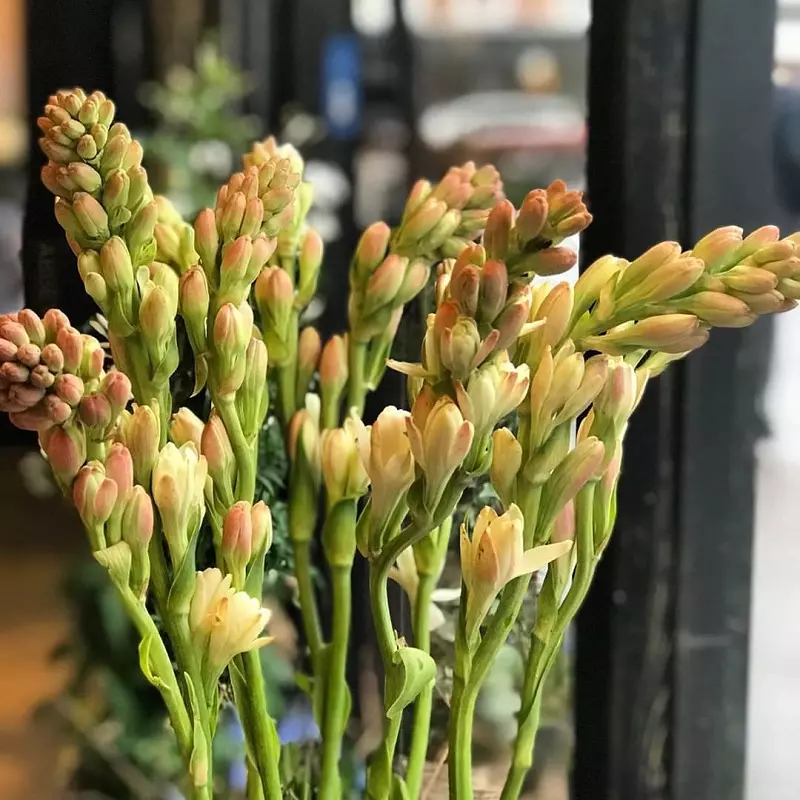
📍 Was ist Tuberose?
Die Tuberose ist eine sehr attraktive Pflanze, die für ihr Aussehen und ihren Duft geschätzt wird. Die Blume wird erfahrenen Gärtnern empfohlen, vor allem wegen ihrer hohen Kulturanforderungen. Sie kann im Beet und in Töpfen angebaut werden.
📍 Wie sieht die Tuberose aus?
Die Tuberose hat ein recht charakteristisches Aussehen. Die Basis der Pflanze besteht aus langen, dichten und geraden Blättern. In der Mitte wächst ein Stängel. Die Blüten sind recht eigenartig und ähneln kleinen Lilien. Sie können weiß, gelb und rosa sein.
📍 Wie riecht die Tuberose?
Tuberose entwickelt einen charakteristischen intensiven Duft. Manche vergleichen ihn mit Jasmin in Kombination mit Maiglöckchen. Der Duft ist ein wenig tropisch mit einer Zitrusnote. Er gilt als perfekt für reife, aber geheimnisvolle Frauen. Die ätherischen Öle der Tuberose werden auch zur Entspannung verwendet.
📍 Wann sollte man Tuberose kaufen?
Tuberosezwiebeln sind sehr beliebt, weshalb man sie in Gartengeschäften und online kaufen kann. Achten Sie darauf, vertrauenswürdige Orte zu wählen, um sicher zu sein, dass sie richtig gelagert wurden. Das ist eine Garantie dafür, dass die Pflanze gut wachsen wird.
Empfohlene Artikel




